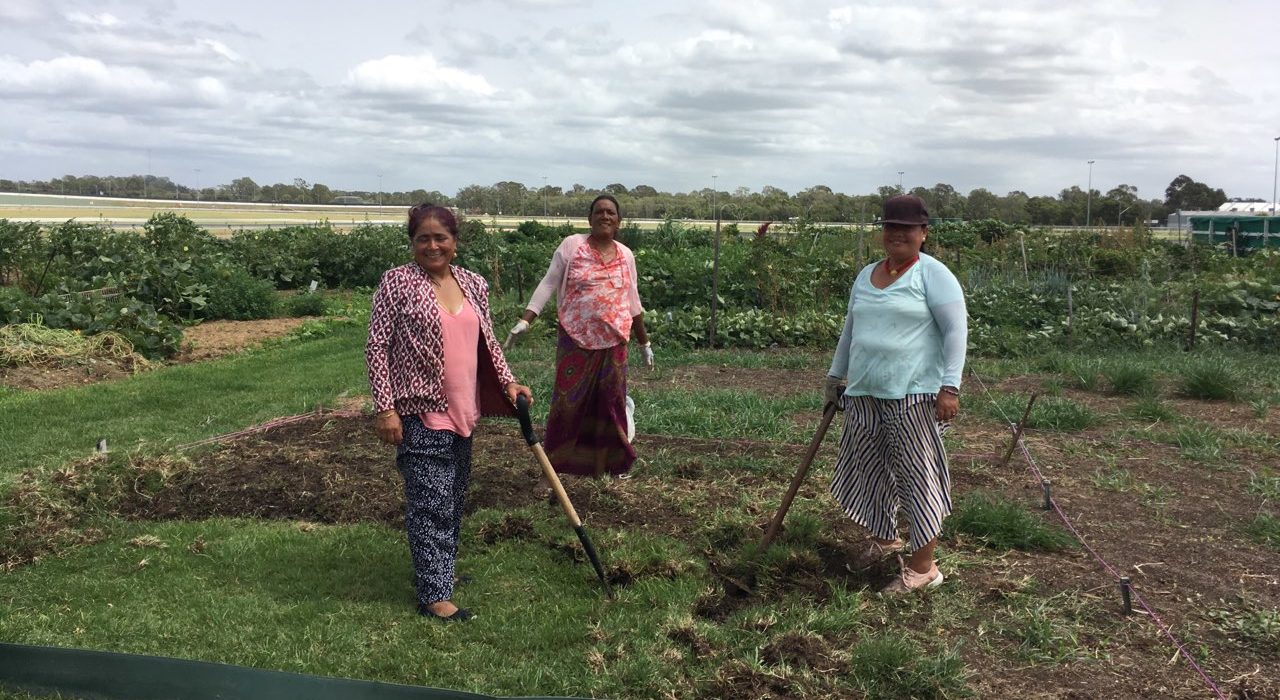When we arrive at the farm at about 2pm, it’s uncharacteristically sunny. Following a spate of rainy days, the saturated blue of the sky makes me squint as I walk behind Daniel over the racetrack. As we walk, he tells me about himself: it’s his first week as coordinator and he is eager to get immersed in the community.
Green P is an important site for people with diverse or minority backgrounds, he says. Among the farmers are refugees and migrants from Nepal or Bhutan who faced religious persecution or from Sudan fleeing war. Many struggle to learn English or find community tens of thousands of kilometres from their homelands. As we approach a communal area, Daniel speaks of the importance of providing a place for people not just to work and grow food, but foster kinship with the people around them.
Most of Daniel’s job is conflict resolution. He explains how the farm makes its own compost, but that they struggle to divide it evenly between farmers. Everyone has their own plot, but the borders of plots and the arrangement of entitlements can be confusing.
Green P Farm is leased in the middle of Deagon Racecourse under several conditions with Racing Queensland for horse safety. No crops can be over 1.4 meters tall, and no metal can be used in crop-keeping. The farm has many stakeholders, and just keeping it running is an impressive logistical feat.
Our other companion is Rob, a worker from Conservation and Land Management organising some students from Skilling Queenslanders for Work to improve the farm’s infrastructure. I sidestep a puddle of mud, and Rob says, “we should use the grant money to put some deco down”. He explains at my questioning that it is powdered concrete and rock, a base for paths that would stabilise the swampy ground and allow for wheelbarrows to pass. I nod as I dodge another puddle.
We approach a rest area to find a farmer catching his breath in the shade. He introduces himself as Keshar, who works here with his wife Guaga. Daniel almost immediately starts asking questions about his plot, how he uses the work area, and the state of his tools.
A few plots away I find Joyce Gower, another farmer, struggling with a leaky tap. I help her reattach a hose and she begins to water her garden. She tells me about how her pumpkins are growing and fusses over weeds and rats. Originally from the Solomon Islands, she says the Hibiscus in an adjacent plot reminds her of home. We bond over our appreciation for mustard greens.
Meanwhile, Daniel and Rob are going over the communal storage sheds. Rudimentary structures cover dirt floors dampened to mud by the recent rain. The pair discuss drainage and water recapture and replacing the hand tools that have fallen into disrepair. The problems are simple but numerous.
The contrast between the two men is sharpened by their observations. Daniel talks with the community members, imagining shared spaces defined by their users. He sees how the farm could be, how it shapes the lives of the community and its importance to the people who work and form relationships there. His experience in ecology and community management shows; he wonders aloud about how flowerbeds would brighten the feel of the area.
Rob thinks like an engineer. Ever practical, you can almost hear the numbers crunching in his head as he mentally erects walls and calculates floor plans. His notebook is full of diagrams and sketches. He jokes about the corrugated roof of the wheelbarrow shed: “if it’s not leaking, there’s no problem”.
Deagon Racecourse is one of the last places you might expect to find a farm. Rob comments on how he has been a Sandgate native for 40+ years, and never known it existed until a week ago. I’d never heard of it until I was asked to drop by last week. But its importance to the people who work there cannot be overstated. For some it is one of the only parts of their lives where they can find a genuine sense of community.


